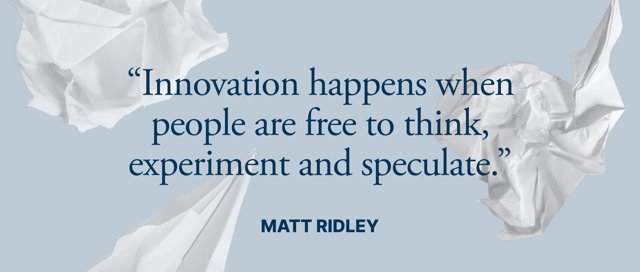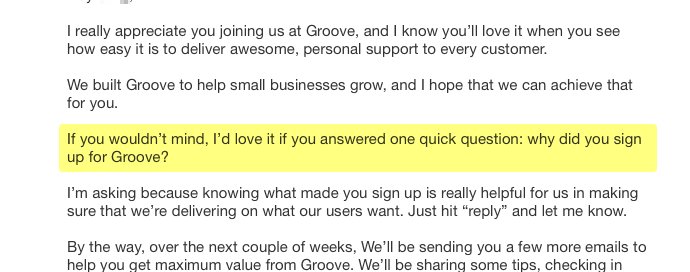Customer-Driven Innovation Done Right By 5 Iconic Brands

Table of contents
Is empathy all it takes to solve customer problems?
Today when a new product fails to meet customer expectations at some level, customers do not shy away from expressing their displeasure.
But the key to ensuring what you offer aligns with customer needs is in becoming more customer-centric. This is a lot more than just getting a good product out of the door or staffing a contact center.
Customer-centric companies are completely focused on curating amazing customer experiences by using the right customer service software. It is almost like a way of life within these organizations, with many facets coming under its influence—from employee engagement to customer experience.
Peter Fader, Professor of Marketing, Wharton University puts it across in the best manner possible when he says—
Customer-centric companies don’t make products they think customers will want; they make products they know their customers will want.
Every business and startup should look at ways to innovate their customer experience. That said, innovation is not something that pops up overnight. It takes careful planning, analysis, and testing to create something stellar.

Get this—according to a PwC report, nearly 65% of customers believe that a great experience with a brand is far more influential than advertising. This goes on to show how acting on customer feedback can go a long way in shaping a brand’s success story.
Come to think of it, some of the biggest brands have seen long-term success as a result of acting on customer feedback.
In this post, we’ll uncover some iconic brands that have actioned customer feedback by shifting the focus from product to customer-driven innovation (or customer-centric innovation).
These are brands that acted on insights to win customers for life. But before we dive in, let’s understand what customer-driven innovation is.
Table of Contents
- Customer-driven innovation: What’s all the fuss about?
- 5 brands that are listening to their customers to drive innovation
- Is your customer always right?
- Closing Note
Customer-driven innovation: What’s all the fuss about?
Companies are under immense pressure to constantly churn out new products and services for the end-user, making innovation a key competitive battleground. For several years, the prime focus of innovation revolved around the product or service—right from rolling out new features to redesigning and improving existing ones, in an effort to add more value.
But these breakthroughs in innovation were short-lived with competitors soon catching up and incorporating these improvements into their offerings as well. With a plethora of options available in the market and with each brand vying for customer attention, all it takes is a slight social media prompt to get your customer swaying to a more alluring marketing tactic.
Companies soon realized that the traditional innovation process of doing market research, developing new product ideas in-house, and then conducting focus groups don’t always reflect customers’ actual needs and desires. This is why the launch of some products or services failed to take off the way its makers intended it to.
Customer-driven innovation sets the stage for companies to develop fresh ideas for products, and services, along with new ways of doing business. Simply put, it is product innovation with the customer at the heart of it. Customer-driven innovations are marked by dynamic interactions with customers where careful attention is paid to customer needs and feedback. According to a Salesforce report, 66% of customers expect businesses to understand their needs and expectations.
Implementing customers’ innovative ideas into real, tangible products and solutions can build customer loyalty and engagement multifold—two highly treasured commodities that can give you a competitive advantage in today’s market space.
For instance, Dell and P&G are making customer-driven innovation a key channel to develop new products and services. They have a platform for customers to post reviews and new product ideas. The feedback received forms the basis for transforming a large chunk of their offerings. These companies have aced the art of delivering superior solutions that not only meet customers’ needs but exceed their expectations and boost metrics such as customer satisfaction.
5 brands that are listening to their customers to drive innovation
The best way to improve your product is to listen to what its users – your customers – have to say. Here, we’ll take a look at 5 businesses that are setting the gold standards when it comes to customer-centric innovation.
1. Trader Joe’s
One of the most customer-centric companies, each Trader Joe’s store’s inventory is customized based on customer feedback. Sounds pretty unreal?
Here’s how they make it work:
At Trader Joe’s, feedback is not collected the traditional way through surveys, focus groups, or emails. Instead, store managers and staff take the initiative to talk to customers in person, hand out product samples, and get customer insights on the products that they would like to see on the shelves.
Based on the feedback, they remove product categories that are not popular and stack up the shelves with those that are high in demand. The company made a whopping $1750 in sales per square foot simply by listening to their customers.

2. Dominique Ansel Bakery
Dominique Ansel, the pastry chef at the Dominique Ansel Bakery, New York, didn’t know much about doughnuts, although he had tasted them a few times. He was more familiar with the Croissants that he grew up eating. When a customer pointed out that doughnuts were missing from his menu, Dominique went back to his roots to invent a new pastry called the Cronut. Ansel’s new pastry became an instant hit with hundreds of doughnut lovers lining up in front of the store to get a taste of the new pastry in town.
3. Lego
This is a classic example of a brand that believes in co-creation and customer-centric innovations. Lego Ideas, the brand’s online community, was formed to unite ardent fans and creators from across the world. Members can share their ideas and designs for new Lego kits—and get their peers to vote for their idea.
Ideas that garner 10,000 votes or more become eligible for review by the Lego Review Board. The board picks a winner and the idea will be rolled out as the next official Lego Ideas set to be sold worldwide. The winner gets recognized as the creator of the kit and earns a percentage of the sales.

4. Sainsbury’s
It sure is the little things in life that make a big difference.
Years ago, when then three-and-a-half-year-old Lily Robinson wrote a letter to Sainsbury’s, no one would have imagined what would transpire from it.
The UK-based supermarket chain, went on to rebrand an entire product, simply because Lily felt that their Tiger bread looked more like the spots on a giraffe than the stripes on a tiger. Sainsbury’s acted on it immediately and created new labels to share Lilly’s insight with other customers.

5. Groove
Groove, a SaaS help desk product, valued customer feedback right from the early days of its inception. The company took a customer-centric methodology to design its website. Though the website was successful, Groove had an onboarding problem. A lot of people who signed up for the free trial, left the platform as the process seemed confusing.
Seeing how powerful customer feedback was for optimizing their design, they decided to repeat the same formula and reached out to customers. A simple question on email—why did you sign up for Groove? received an overwhelming response. The team got ideas to streamline their onboarding process and requests for features they didn’t know the customers wanted.

Is your customer always right?
While the payoffs are great, you need to be realistic about your expectations from customer-centric innovation. Here are 3 tips to keep in mind while embracing this ideology.
1. Set rules to determine what kind of new ideas the company will or won’t embrace.
Decide on how much is too much. Will you go all out and take everything in? Or is it wise to set a few boundaries on what ideas you are willing to embrace and what you are not — for product development? These are a few questions to ponder while deciding on your innovation strategy.
2. Avoid taking decisions based on the feedback of a vocal minority alone.
Sometimes your most vocal customers are not the voice of your average customer base. You may end up taking their feedback for a new feature, and spend countless hours working on it only to find that the only person who cared about the new release was the one who raised the request.
3. Don’t let customer-driven innovation discount the values of the more traditional methods.
Your innovation management strategy must be customer-focused but not customer-led. Your customers can’t take the call on what your next product should be. Companies that are looking to grow with innovation must look at how they can do things differently, and what solutions they can offer to create a superior brand experience for all stakeholders involved.
The key is to set realistic customer expectations, and then not to just meet them, but to exceed them in unexpected and helpful ways.
Sir Richard Branson
Closing Note
While it is important to stay abreast of competition, businesses should focus more on keeping up with their customers and the best way to do this is to start listening to them.
First things first, build a top-notch customer feedback system. Next, address and act on customer feedback.
The above examples are proof that feedback-fueled innovations lead to long-term success. Take cues from these companies to chart your own path to success, while keeping your customers at the core.

































